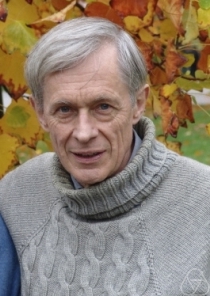Egbert Brieskorn facts for kids
Egbert Valentin Brieskorn was a German mathematician. He was born on July 7, 1936, in Rostock and passed away on July 11, 2013, in Bonn. He is well-known for creating new ideas in math, like Brieskorn spheres and the Brieskorn–Grothendieck resolution. These are special mathematical concepts he developed.
Egbert Brieskorn's Early Life and Studies
Egbert Brieskorn was born in 1936. His father was an engineer. He grew up in a town called Freudenberg in Germany. He loved to study math and physics. He went to two universities for his studies: the Ludwig-Maximilians-Universität München and the Rheinische Friedrich-Wilhelms-Universität Bonn.
In 1963, he earned his doctorate degree from the University of Bonn. This is a very high academic achievement. His teacher for this degree was a famous mathematician named Friedrich Hirzebruch. Later, in 1968, he completed his habilitation. This allowed him to teach as a professor at universities in Germany.
Egbert Brieskorn's Teaching Career
From 1969 to 1973, Egbert Brieskorn worked as a professor at the Georg-August-Universität Göttingen. After that, he moved to Bonn. From 1973 to 1975, he worked at a special research center for theoretical math. This center later became the Max-Planck-Institut für Mathematik.
In 1975, he became a full professor at the University of Bonn. He taught there until he retired in 2001. During his career, he also taught for short periods at many other famous universities around the world. These included the Massachusetts Institute of Technology (MIT) in the USA, the Institut des Hautes Études Scientifiques in France, and the Eidgenössische Technische Hochschule Zürich in Switzerland. He also taught in the Netherlands and the United Kingdom.
Important Math Ideas by Egbert Brieskorn
Egbert Brieskorn made many important contributions to the world of mathematics. He helped edit the collected works of Felix Hausdorff, another very important mathematician.
In 1970, he was invited to speak at a big international meeting for mathematicians in Nice, France. This is a great honor, showing how important his work was. His speech was about "Singular elements of semi-simple algebraic groups."
He also taught and guided many students who became successful mathematicians themselves. Some of his doctoral students include Horst Knörrer, Peter Slodowy, Kyoji Saito, and Erhard Scholz.


